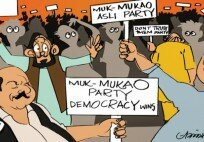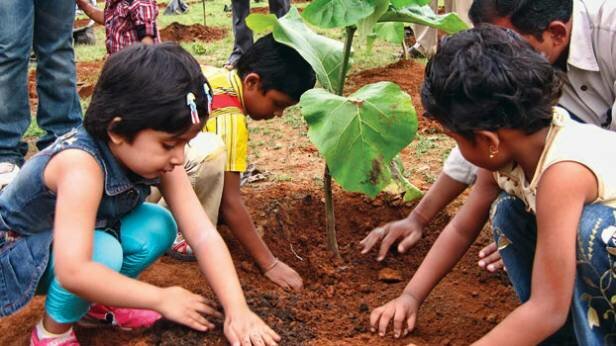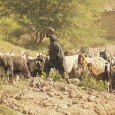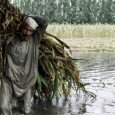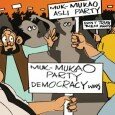By Afia Salam –
Aamir Jadoon has made it his life’s mission to fight the odds: against a recommended 25% forestry cover, Pakistan has a debatable 5.2%
The words I have a dream may have been immortalized by Martin Luther King, the great American civil rights activist but are, in fact, the articulation of everyone’s innate desire to reach a higher plane, to achieve something good, and to aspire to a goal, usually beyond the personal and the selfish.
Some are lucky enough to start their journey on a path that will take them to the realization of that dream. One such young man is Aamir Jadoon. His dream, to put it simply, is to have as many trees as there are people in Pakistan.
However, there is nothing simple about achieving it. Of the 25% world recommended forest cover for a country, Pakistan has a debatable 5.2 %. It is also one of the countries with the highest rates of deforestation. And to top it all, our population growth rates is among the highest in the world. So the odds are really stacked up against him.
But is Jadoon deterred? Not at all!
He has founded an organization —Movement for Green Pakistan — whose sole aim is to increase the forest cover of Pakistan through voluntary participation by the citizens of Pakistan, and he undertakes awareness raising and advocacy to garner support.
Working as a producer at Pakistan Television, his interest in the environment and development of Pakistan resulted in him pursuing studies from the Pakistan Institute of Development Economics.
Being in the broadcast media, he got first hand information about the nexus of environmental degradation and disasters, especially in the context of deforestation.
He has now made it his life’s mission to team up with any individual or organization that would help him plant trees, and presents a very convincing argument by doing the math and showing the results.
According to him, “on an average, every Pakistani consumes wood of 10 trees of 50 years of age directly or indirectly in his/her life.”
Considering that in 2011 the population of Pakistan was somewhere between 180-190 million with the growth rate of 1.551% —some 3 million children arriving every year — the average depletion rate of between 0.2-0.5% is likely to accelerate.
For a country that has an area of 796000 km2 the meagre 5.2% forest area (and mind you, the area does not mean all areas have a standing forest in them — they are just technically designated as the forest area) would amount to one tree every 500 metres, which is scant.
You can listen to him articulating his vision here: http://speakforchange.org/?s=jadoon
Jadoon realizes the onerous task, and has proposed a solution.
“If policy makers bind every family to plant at least 10 trees for the birth of every child, or alternatively pay birth certificate fee equal to the cost of planting 10 trees to a green fund, we should be able to plant as much as 30 million trees every year.
“And if we continue this practice for 50 years (the average life span of a Pakistani) we would be able to plant as many as 1.5 billion trees in the country. This means there would be around 1800 trees/km2 plus the current stock of trees.”
While this may seem ambitious and impractical, knowing not just the ineptitude of the government, but also the inability of those paying for certificates to pay an enhanced rate, we must also bear in mind that registering births is not really a common occurrence in this country. This is why all figures thrown at us are always perceived to be dodgy.
Be that as it may, building a core group of volunteers and garnering support from civil society groups, individuals as well as the corporate sector, Jadoon may be able to not just realize his personal dream, but make his country richer in tree cover as well.
Generally, the trend is to go for short term help and philanthropy, the results of which would be visible immediately. Like feeding the poor or assisting in health care or education. Nature however, has not been the recipient of this attention, despite exhortation from all religions to take care of it.
Only those with a long term vision and foresight are mindful of the need to invest in the natural resources to benefit the coming generations.
As has been so aptly said in a Greek proverb, “a society grows great when old men plant trees whose shade they know they shall never sit in.” They need to know that they are doing it for their children or their grandchildren. They must have a dream to leave the world a better place than they found it.
While the progress may be slow and painstaking, Jadoon is fortunate to have found willing support from some quarters who have stepped forward to take his mission forward.
So far, he has, through his Movement for Green Pakistan, managed to plant around 20,000 in different locations e.g. 15,000 plants in Quaid-i-Azam University Islamabad, around 3,000 in Judges’ Colony Satra Meel (as in 17 miles) Islamabad etc.
In the new tree plantation season, plans are for afoot for around 100,000 plants in Gomal University Dera Ismail Khan in Khyber Pakhtunkhwa. He is looking for more ‘dreamers’, who share his vision, and can become coordinators in their respective areas to shoulder the responsibility of not only planting trees, but nurturing and protecting them.
We, in Pakistan, do not have a very good experience of the bi-annual tree plantation drives that have been taking place because after the fanfare and photo ops, there is no mechanism to take care of the saplings and plants to make sure that they grow up and mature as trees.
We also have examples in several parts of the country of unsuitable growth in layman terms, and AIS or Alien Invasive Species in forestry terms, being planted simply because they are rapidly growing and can be cited proof of “successful completion of a project.”
The lush green traffic islands and avenues in Karachi and most parks and grounds sporting the tall, slender, asthma-inducing pollen bearing Conocarpus are a case in point.
Islamabad has already had its skirmish with the paper mulberry which proved to be a health hazard, and if you travel beyond the Motorway, beyond Kallar Kahar, into Khushab, towards the water stressed Salt Range, you will see Eucalyptus along the way, a tree known to consume a lot of water and which results in the lowering of the water table.
These are matters to be tackled by the academia and policy makers, but the civil society needs to keep itself abreast of such developments so it can act as a watchdog over such plans.
Dreamers like Aamir Jadoon need to dream with their eyes wide open lest their plantation drive brings more harm than benefit in the long run.
It is encouraging that due to the worldwide awareness for the need for reforestation, for a variety of reason, Pakistan, too, has become a part of a worldwide initiative known as REDD+, or Reducing Emission from Deforestation and Forest Degradation Plus.
This has been initiated by the United Nations Framework Convention on Climate Change (UNFCCC) in the context of climate change mitigation.
REDD+ is an incentive based mitigation mechanism and is expected to address the potential role of forestry up to 17-25% reported share towards Green House Gas emissions reduction. Through this mechanism, Pakistan can also earn credits through the carbon market, which may also offset the costs incurred in reforestation measures.
Earning carbon credits is a new and novel method and while Pakistan has been late in climbing this bandwagon, unlike regional countries like India, China, Nepal etc., the fact that it is now working on projects that will encourage increasing the tree cover of Pakistan is indeed encouraging. Here, too, there is a need to keep a watchful eye on the projects to ensure transparency and good governance.
Perhaps, we need more people like Jadoon who need to say ‘I have a dream’ and then get down to make it come true, for, as it has been said by a sage, “The best time to plant a tree was twenty years ago. The second best time is now.”
The writer specializes in environment and is based in Karachi






















